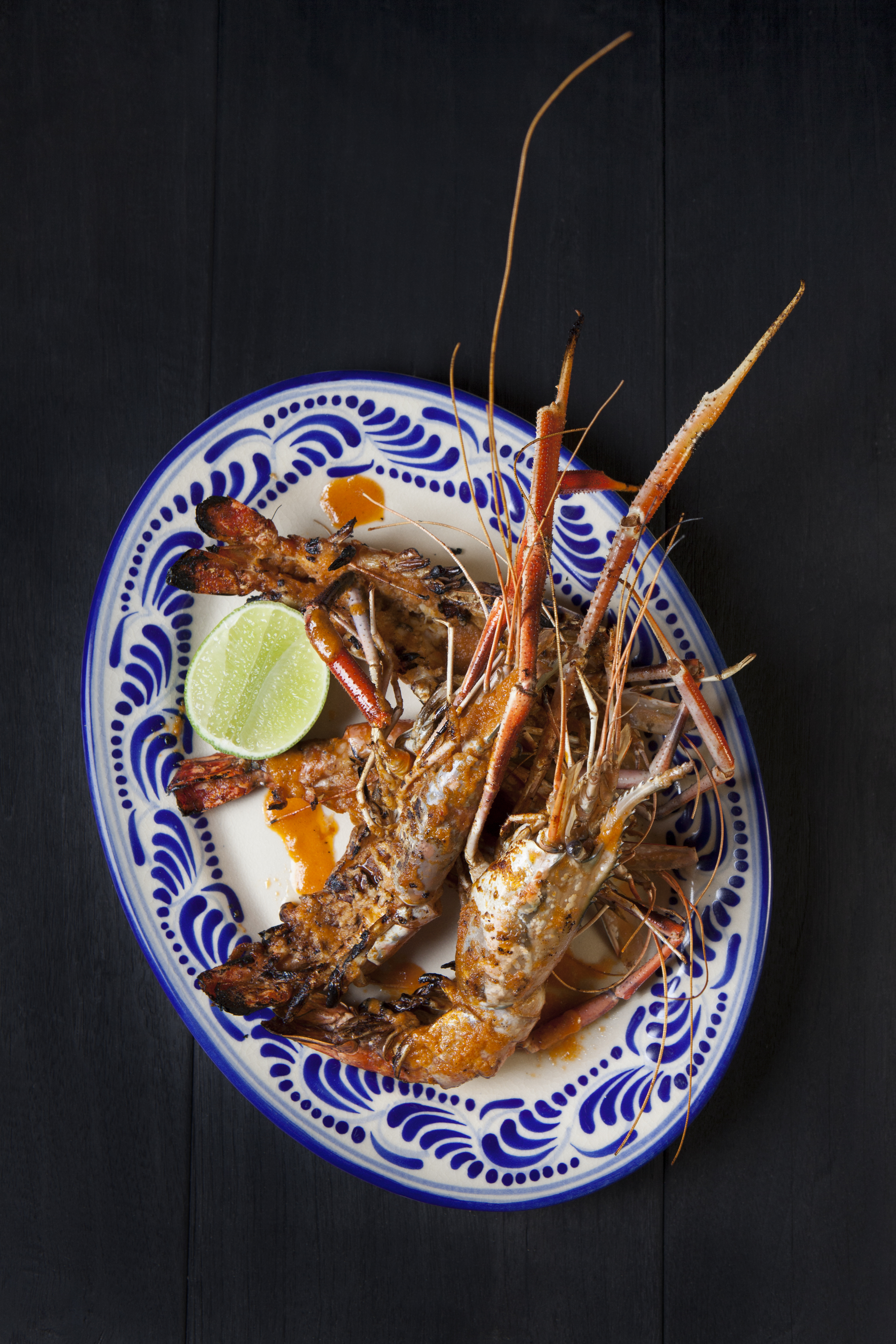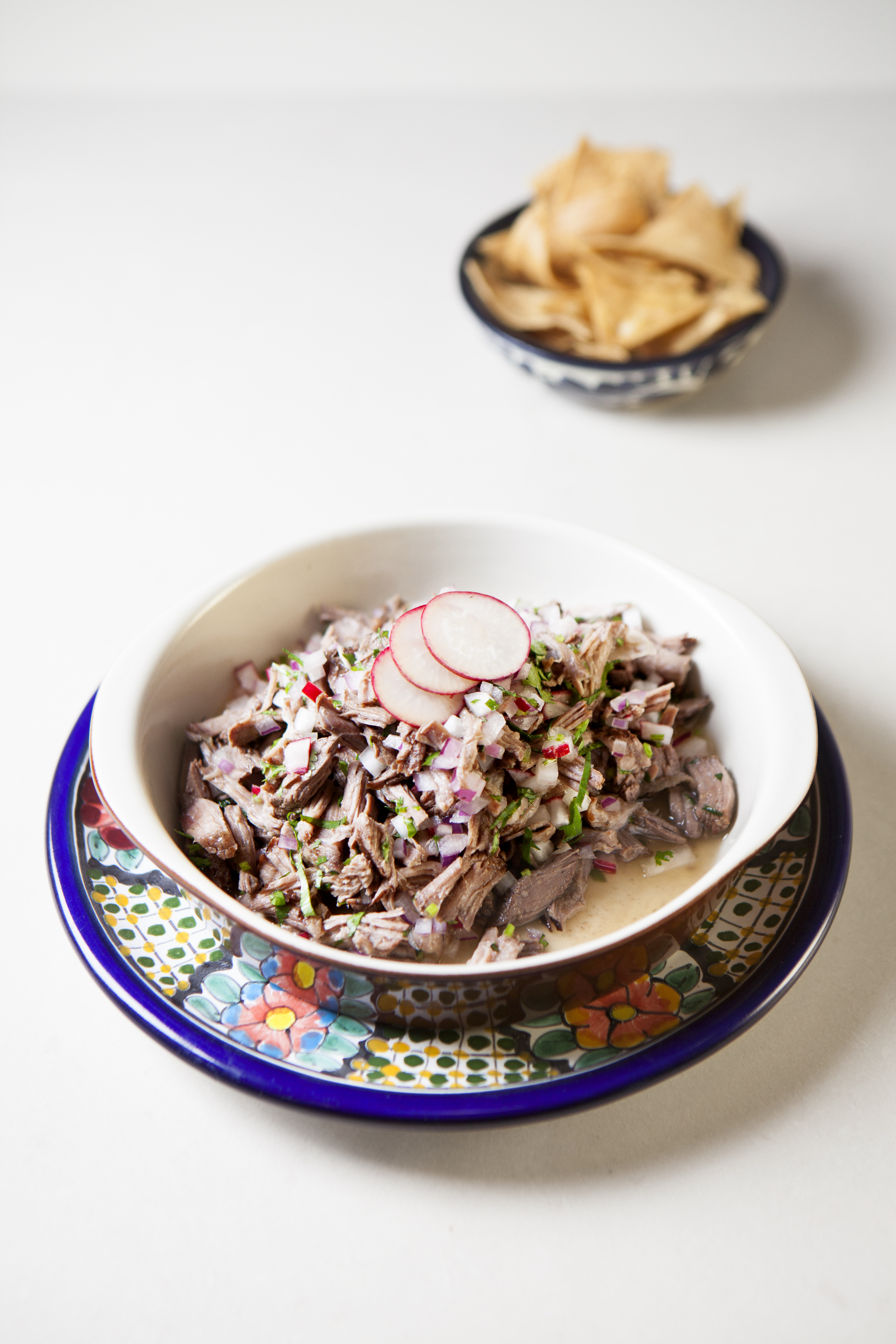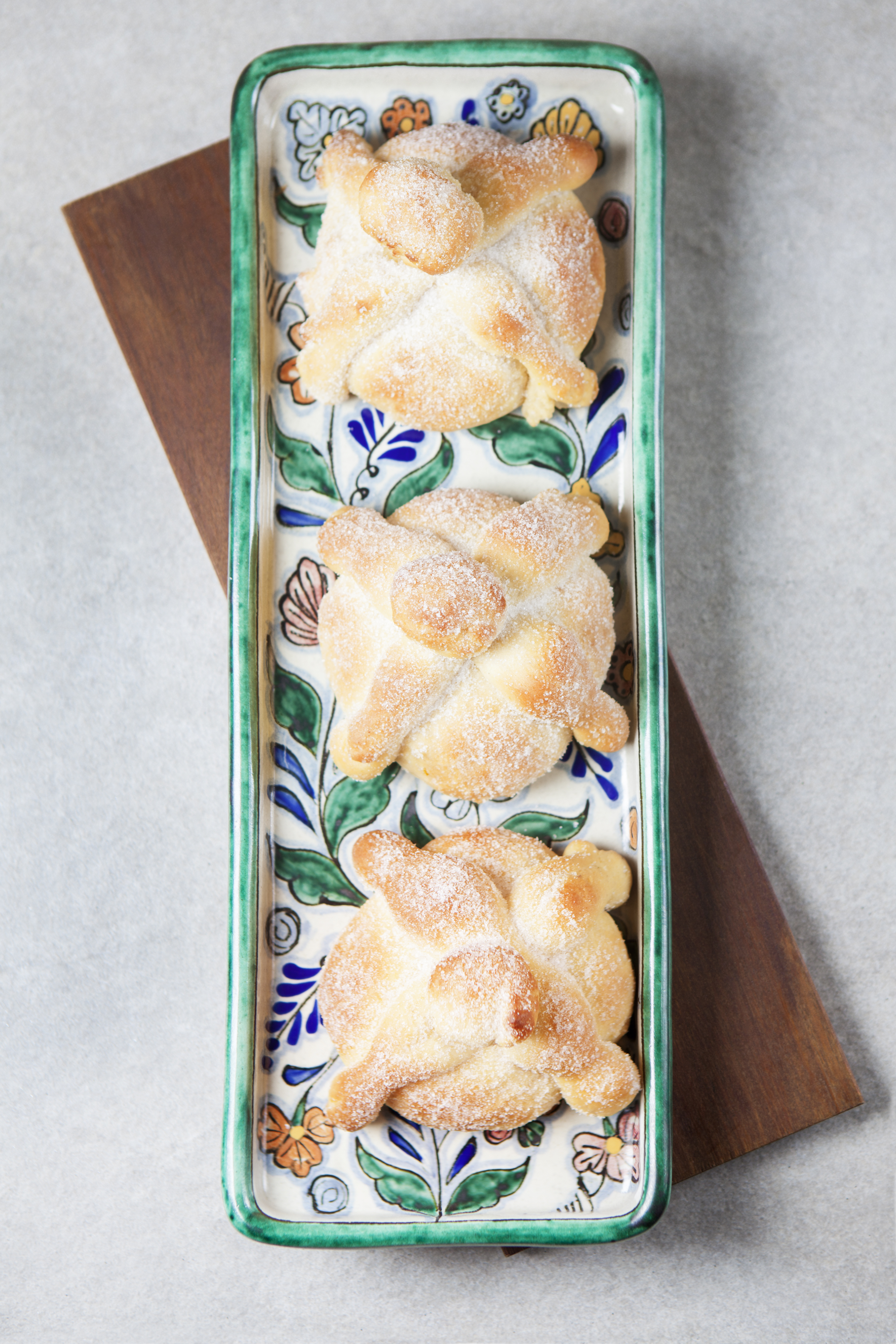A ten-region tour of Mexico’s most exciting cuisine and accommodations.
The ubiquity of Mexican and Tex-Mex restaurants in the United States, particularly those of the fast-food and chain variety, can give the impression that Mexican cuisine is a relatively simple affair, made from combinations of the same handful of ingredients. But look beyond the few big dishes that Americans (and most of the world) are most familiar with and you’ll find a culinary history that is actually quite complex, with influences not only from ancient indigenous and Spanish customs, but also from the Mediterranean, Arab, and Jewish worlds.
With Phaidon’s MEXICO: THE COOKBOOK as our guide, we’re highlighting some of the signature dishes and key ingredients from ten different states in Mexico — along with a few of author Margarita Carrillo Arronte’s authentic home cooking recipes that you can easily recreate at your own casa. (Tablet users can save 30% at Phaidon.com with code SPRING1830.)
And don’t worry, we’ve brought along our hospitality expertise as well. After you’ve spent all day eating your way through Mexico, you’ll need a place to sleep, so for each region on the tour we’ve included a couple of our favorite hotels.
Let’s get started!

PUEBLA
Chiles in Walnut Sauce
The state of Puebla, just southeast of Mexico City, is most known for its mole poblano, the chocolate-tinged sauce that many consider the country’s national dish, and that everyone agrees is the Mexico’s most famous mole. Tacos árabes, a form of shawarma-style spit-roasted pork brought by Lebanese immigrants, is another important local delicacy. The award for their best-looking dish, though, probably goes to Chiles in Walnut Sauce. Typically served during Mexican Independence Day celebrations in September, it features poblano chiles stuffed with meat, fruit, and nuts, and covered in walnut sauce and pomegranates, all combining to represent the colors of the Mexican flag. So beautiful, it’s almost a shame to eat it.
WHERE TO STAY IN PUEBLA:
A pair of 18th-century mansions combined with a modern addition means you’ll have to decide which style you’re in the mood for at Hotel Cartesiano. Either way, you’ll be in Puebla City’s Spanish colonial core, surrounded by enchanting Mexican Baroque architecture, the highest concentration of such buildings in the world.
Not too far from there is La Purificadora, a 19th-century water processing plant and bottling factory redesigned into a boutique hotel by the famous Mexican modernist architect Ricardo Legorreta. In its twenty-six rooms you’ll find a lot of natural wood and stone, with the exterior walls and some interior surfaces remaining untouched and unpainted.
[cucinacartesiano]

BAJA
Bay Scallop Ceviche
The Baja Peninsula is increasingly becoming known for the European-influenced wines of the Valle de Guadalupe, about an hour or so south of the California border. Winemakers from Germany, Spain, Italy and France brought their knowledge to this arid region to create sophisticated and surprisingly coherent varietals to rival the world’s best. But we’re here to talk about food, and as befits a peninsula surrounded by water, seafood is a great place to start. You can’t go wrong with the fish tacos, of course, and the Mediterranean-inspired fusion of “Baja Med” is very much a legitimate thing. Bay Scallop Ceviche makes for a breezy and refreshing appetizer that won’t take long at all to prepare with the recipe below.
WHERE TO STAY IN BAJA:
Todos Santos, on Baja’s Pacific coast, is in the midst of making that familiar transition from fishing village to bohemian getaway to emerging tourist destination — and Hotel San Cristóbal, a fun, chill little hotel, right on the beach, catches it at just the right time.
In the much more bustling Cabo San Lucas, The Cape is blessed with a first-rate location on Monuments Beach, with views of the famous Arch across the bay. And the design, by the Mexico City–based architect Javier Sanchez, blends a hand-crafted local look with a bit of a SoCal modernist vibe.
[cucinaristobal]

JALISCO
Birria
Jalisco, a coastal state in Western Mexico, is the home of tequila, that sweet and smoky nectar of the gods made from the heart of the blue agave plant (and responsible for people all over the world waking up on Saturday morning feeling just terrific). If that weren’t culturally significant enough, Jalisco also lays claim to the origins of modern mariachi music, and Jaripeo, a form of bull riding. But here we’re turning our attention toward birria, a hugely important dish from the region. Served throughout the country, often at celebrations and holidays, birria is a spicy stew made with roasted lamb, goat, or beef along with dried chiles, cinnamon and other spices in a tomato-based broth and served with tortillas.
WHERE TO STAY IN JALISCO:
Located in Guadalajara’s happening neighborhood of Zona Minerva, Casa Fayette is a chic 37-room hotel with a minimalist aesthetic and a breezy rooftop terrace. The design has a distinctly European feel, though most of the materials, from stone to textiles, were sourced in Jalisco.
Meanwhile, on the Pacific coast, when a Bolivian tin magnate didn’t live to complete his mega-resort, his granddaughter took over, revised the plans, and erected instead Las Alamandas, a tiny, exclusive resort, where a maximum of 28 guests enjoy 1,500 acres of pristine beachfront land.
[cucinafayette]

VERACRUZ
Barbecued Langoustines
In the east, the cuisine of the coastal state of Veracruz — officially the Free and Sovereign State of Veracruz de Ignacio de la Llave — is centered around rice and seafood dishes that are reminiscent of Spanish paella. Fish, oysters, crab, and shrimp are used heavily, particularly along the coast, sometimes with a Creole or Afro-Cuban influence due to the slave trade through the Caribbean in the colonial era. Langoustines, also known as Dublin Bay prawns or Norway lobsters, are not native to the region, but that shouldn’t put you off — they’re frozen on the boats immediately after being caught. The recipe below provides a unique Caribbean-inspired take that you can also use with diced fish fillets or jumbo shrimp.
WHERE TO STAY IN VERACRUZ:
Mexico has more geographic and cultural diversity than the travel industry might lead you to believe. The stereotypical picture of Mexico doesn’t usually include a place like San Rafael, a little French enclave in Veracruz, home to Maison Couturier, a nineteenth-century estate, fringed with lush vegetation, and today operating as a nine-room boutique hotel.
Just up the road in Monte Gordo, right on the beach, Hotel Azucar is a design-savvy eco-retreat whose twenty thatched-roof bungalows are sustainably built and, as a reward for your environmental consciousness, come with private terraces and hammocks.
[cucinamaison]

YUCATÁN
Venison Dzik
Isolated from the center of the country for centuries, the Yucatán Peninsula has a food culture that’s notably distinct from the rest of Mexico. The ships of European explorers would stop there for fresh water, and their culinary ideas mixed with Mayan customs that stretch back to ancient Mesoamerica. One result of this confluence is cochinita pibil, where suckling pig, introduced by the Spanish, is wrapped in banana leaves and roasted in a pit buried beneath a layer of earth — a pre-Hispanic method of cooking. The region is also the largest producer of habanero chiles, until recently considered the world’s hottest, and is home, perhaps surprisingly, to the brown brocket deer, a rather small version of the species, which is used in another popular dish: Venison Dzik.
WHERE TO STAY IN YUCATÁN:
Fashioned from adjacent colonial mansions, Rosas & Xocolate is located not on the Yucatán’s Tulum–Cancún continuum, but in Mérida, the seat of the Maya empire’s most resilient cultural impact, where pastel Belle Époque façades overlook stately, tree-lined avenues.
Further into the Yucatán jungle, tucked among ruins and sacred sites, are the casitas of Chablé Resort & Spa, a wellness resort that’s worthy of the name. Relax with Maya-inspired healing techniques and a spa built around a natural cenote, a swimming hole with purportedly healing waters.
[cucinachable]

QUINTANA ROO
“Tikin-Xik” Fish
The state of Quintana Roo stretches along the coast of the Yucatán Peninsula from the popular tourist destinations of Cancún and Playa del Carmen all the way down to the Mexican border with Belize. Tulum, the bohemian beach town whose popularity has shot through the roof in recent years, has become a bona fide culinary hotspot, attracting some the world’s best chefs. You’re going to encounter more than a few excellent fish dishes thanks to the seaside location, and the method of preparation most synonymous with the region is Tikin-Xik, where a grouper or saltwater whitefish is marinated with a sauce made from sour orange juice and achiote paste, a staple ingredient of local dishes, then covered in onions, tomatoes, peppers, and other spices and baked in a banana leaf.
WHERE TO STAY IN QUINTANA ROO:
The Cuban-born writer and artist Sandra Pérez transformed a little strip of coast on Holbox island, at the very northern tip of the state, into Boutique Hotel Casasandra, a pared-down, unpretentious, funky little beach resort of just a dozen rooms and suites spread among a few low buildings with sunset views over the sea.
On the mainland in Tulum, a stretch of wild coastline is the setting for Papaya Playa Project, 99 cabanas, huts, and shacks left behind by a trio of once-abandoned hotel projects. Decompression is the goal of this minimally-serviced “beachfront commune,” along with getting as close to the original, pre-tourism Tulum as possible.
[cucinacasandra]

GUERRERO/MICHOACÁN
Stuffed Avacadoes
The states of Michoacán and Guerrero sit alongside each other, abutting the Pacific Ocean. Guerrero’s claim to fame is corn — it’s believed the crop was first domesticated there in the Central Balsas River Valley almost 10,000 years ago, and the region’s cuisine also shows hints of a French influence from nineteenth- and twentieth-century missionaries. If you visit Acapulco, be sure to try pulpo enamorado, a local octopus dish. Michoacán has been called “the soul of Mexico,” and its rustic and hearty cuisine just might be Mexico’s soul food. Tamales are as big here as anywhere else in Mexico, and are prepared in unusual and unique ways. The town of Cotija is responsible for the hard, crumbly cheese of the same name. And avocados, prepared in seemingly unlimited variety, are one of the state’s most recognizable ingredients.
WHERE TO STAY IN GUERRERO:
In the idyllic seaside village of Troncones is the distinctly modernist, totally unforgettable Hotel Lo Sereno – Casa de Playa. Here, hotelier Rafael Sainz Skewes set out to challenge the thatched-roof stereotype of Mexican beach resorts, showing that sun, sand and surf can comfortably coexist with clean-lined, modern concrete architecture.
On protected land a half-hour outside of Zihuatanejo, Playa Viva is the opposite of what annoys a lot of travelers about mass tourism on the Mexican coasts. The coastline that contains these 12 low-key casitas has a long, long way to go before it could be considered developed, much less overdeveloped.
[cucinasereno]

OAXACA
Mushrooms with Garlic
Oaxaca has become a bit of a foodie’s paradise and gastro-historical center thanks to a rugged, uninviting terrain that kept it isolated, helping its ancient indigenous flavors remain authentic despite the influences of globalization. It’s famously known as being the “land of seven moles,” with sauces covering the color spectrum from black through shades of brown and red to green and yellow. Chapulines — grasshoppers — are a popular local snack, fried or toasted and seasoned with garlic, lime, and salt. Markets in Oaxaca will have grasshoppers displayed in brick-red piles. Hongos Al Ajillo, or Mushrooms with Garlic, is as traditional as it comes. And Oaxacan cheese needs very little introduction.
WHERE TO STAY IN OAXACA:
Modern Mexican design, these days, is in full flight, and a new generation of hotels leaves the old stereotypes (rebuilt ruins, tequila-soaked students) a distant memory. Among them is Hotel Casa Azul de Oaxaca, a tiny boutique in the Oaxacan city center that’s a quiet showcase for the city’s modern design scene.
Hotel Escondido, a minimal-rustic beachfront boutique hotel on Oaxaca’s Pacific coast, is essentially the “barefoot luxe” trend at its apex — a sort of impossibly stylish version of beach-bum living, with world-class surfing and kayaking and sixteen smallish, spare, but perfectly formed bungalows.
[cucinaazul]

MEXICO CITY
“Day of the Dead” Bread
Mexico City abounds with great food, ranging from world-class restaurants and haute cuisine to taco stands, lunch counters, and street stalls selling antojitos (“little cravings”) like tamales, tostadas, tortas, and endless others. The culinary scene found in the Distrito Federal is a true melting pot, with influences imported from all throughout the country and from any number of international sources. This recipe for “Day of the Dead” Bread, though, first made by Basque bakers in Mexico City in the middle part of the 20th century, is something the city proudly exports. The sweet bread is decorated with strips of dough shaped into human bones in order to honor the yearly holiday’s purpose as a celebration of life and tribute to the dead.
WHERE TO STAY IN MEXICO CITY:
Not exactly a boutique hotel or a B&B, Pug Seal Allan Poe Suites is something in between. The building itself, set behind wrought-iron gates on a residential block in the hip neighborhood of Polanco, feels more like a large house, albeit one with a fabulous breakfast and complimentary happy hour every evening.
A short walk from the Plaza de la Constitución, Downtown Mexico occupies a central location and an impressive brick-fronted 17th-century palace. Inside, the original high ceilings remain intact, among other charmingly weathered period details, but the prevailing atmosphere is that of a very clean, very contemporary modern boutique style.
[cucinapug]

ALL REGIONS
Guacamole
Mexico is a vast country with diverse climates, terrains, and cultural influences. The depth and variety of its cuisine, then, should be absolutely no surprise, and we hope this brief overview of some of our favorite regions is helpful when you plan your next trip there. Like any country, it isn’t without issues, but when you look beyond the stereotypes and the headlines you’ll find a vibrant and deserving destination for your future travels.
WHERE ELSE TO STAY IN MEXICO:
Staying in one of the four guest rooms at L’Ôtel, a renovated colonial mansion in San Miguel de Allende, feels like staying in the home of a gracious friend who happens to have a talented kitchen staff, a nicely curated collection of paintings, an open-air courtyard, and a rooftop patio with gorgeous views of the town.
In the lush mountain valley of Valle de Brave, Rodavento Boutique Hotel is in actual fact quite a bit more than a boutique hotel. It’s more like a mountain lodge, loaded with outdoor activities and twenty-eight modern suites in tented-roof hillside villas, each one with a deck overlooking the property’s pine forests and private lake.
[cucinaroda]
Adapted from MEXICO: THE COOKBOOK by Margarita Carrillo Arronte
Region: Central Mexico, Federal District
Preparation time: 1 hour, plus 4 hours rising
Cooking time: 45 minutes
Makes: 3 loaves
INGREDIENTS
- 1 cup (9 fl oz/250 ml) milk
- 4 cups (1 lb 2 oz/500 g) plain (all-purpose) flour, plus extra for dusting
- ½ cup (3½ oz/100 g) sugar, plus extra for sprinkling
- 1½ teaspoons active dry (fast-action) yeast
- 4 eggs
- ½ teaspoon sea salt
- 1 tablespoon grated orange zest
- 1–2 teaspoons orange blossom water, to taste
- ¾ cup (7 oz/200 g) cold butter, diced
- melted butter, for greasing and brushing
To glaze:
- 1 egg, beaten
- pinch of sea salt
- pinch of sugar
INSTRUCTIONS
Bring the milk to a boil in a small saucepan over medium-high heat, then remove from hea
t and let cool. Set aside.
Put the flour into a large bowl and make a well. Sprinkle in the sugar and yeast and pour in the milk. Close the well by flicking flour over the milk and let it sit for 1 hour.
Add the remaining ingredients, except the melted butter, and shape into a ball. Transfer to a clean lightly floured work surface and knead for 10 minutes. Add the butter and knead again for 10 minutes. Return to the bowl and cover. Let rise for 2 hours, until doubled in size.
Grease 2 baking sheets with butter. Divide the dough into 3 pieces. Take two of those pieces and roll them into tight balls and then press them gently to flatten a bit. Cover and let rise for 1 hour. Preheat the oven to 400°F (200°C/Gas Mark 6).
After 1 hour, take the remaining piece of dough and divide it into 10 little pieces. Roll 2 of these pieces into small balls and 8 of these pieces into long, thin logs.
To make the glaze, combine all the ingredients and 1 tablespoon water in a small bowl and mix well. Brush the loaves gently with the glaze. Take four of the logs and drape them in an X shape over one of the balls. Repeat for the other disk of dough. Brush these with egg. Take a little ball of dough and place it on the top of one disk of dough, where the X meets. Press down gently so it sticks. Repeat for the other little ball of dough.
Glaze the dough balls and bake in the oven for 30–35 minutes or until golden. Remove from the oven and transfer to a wire rack to cool. While they are still warm, brush with melted butter and sprinkle with sugar.
Adapted from MEXICO: THE COOKBOOK by Margarita Carrillo Arronte
Region: Yucatan Peninsula
Preparation time: 25 minutes, plus 1 hour marinating
Cooking time: 25 minutes
Serves: 6
INGREDIENTS
- 3¼ lb/1.5 kg grouper, filleted juice of 1 orange
- 1½ teaspoons oregano
- 2 tablespoons achiote paste
- 4 tablespoons apple cider vinegar
- 4 tablespoons (2¼ oz/60 g) lard or butter
- 1 large white onion, sliced
- 3 tomatoes, sliced
- 2 bay leaves
- ½-1 habanero chile, membrane and seeds removed
- 2 yellow bell peppers, seeded and cut into strips
- 1 banana leaf
- sea salt and pepper
- plantains, to serve
- Refried Beans (page xxx), to serve
INSTRUCTIONS
Preheat the oven to 350ªF (180ªC/Gas Mark 4).
Place the fillets in a shallow dish. Add the orange juice and oregano and season with salt and pepper. Put the achiote and vinegar in a small bowl, and stir until dissolved. Pour the mixture over the fish, cover with plastic wrap (clingfilm), and marinate in the refrigerator for 1 hour. Grease a large ovenproof dish with some of the lard or butter. Remove the fish from the marinade and place the fish opened out in the dish. Spread with the remaining lard, then put the onion, tomatoes, bay leaves, chile, and bay leaves, chile, and bell peppers on top. Wrap the fish with the banana leaf, then cover with aluminium foil and bake in the oven for 25 minutes or until the fish is cooked but not dry.
Serve with plantains and refried beans.
Adapted from MEXICO: THE COOKBOOK by Margarita Carrillo Arronte
Region: Veracruz, Puebla
Preparation time: 50 minutes, plus 10 soaking
Cooking time: 50 minutes
Serves: 6
INGREDIENTS
- 14 garlic cloves
- 4 ancho chiles, lightly dry-roasted
- 2 mulato chiles, lightly dry-roasted
- 3 tomatoes, dry-roasted
- 1 white onion, dry-roasted
- 8 black peppercorns
- 1 cinnamon stick
- ¼ teaspoon cumin
- 4 cloves
- ½ cup (4 fl oz/120 ml) olive oil
- 1 tablespoon apple cider vinegar
- 2¼ lb/1 kg langoustines cleaned and peeled
- 4 avocado leaves
- sea salt
INSTRUCTIONS
Dry-roast 7 cloves of garlic. Put the chiles in a heatproof bowl, pour in just enough hot water to cover, and soak for 10 minutes. Drain and set aside.
Put the tomatoes, onion, the dry-roasted garlic cloves, five peppercorns, two cloves, the cinnamon stick, cumin, and the chiles into a food processor or blender and process until smooth. Heat 3 tablespoons of the oil in a saucepan over the medium heat, add the sauce, and heat for 20 minutes. Season and set aside.
Put the remaining whole garlic cloves, cloves, peppercorns, and vinegar in a food processor or blender, season with salt, and process until smooth but not a liquid. Put into a bowl.
Cut the langoustines in half lengthwise, add to the mixture in the bowl, coat, then cover with plastic wrap (clingfilm) and marinate in the refrigerator for 1 hour.
Heat the remaining oil in a large frying pan or skillet over medium heat. Add the langoustines and cook for 4-5 minutes. Add the avocado leaves and reserved sauce, then reduce the heat to low and simmer for 15 minutes. Check the seasoning and remove from the heat. Serve immediately.
Note: This recipe can be made with diced fish fillets, or jumbo shrimp (tiger prawns).
Adapted from MEXICO: THE COOKBOOK by Margarita Carrillo Arronte
Region: Baja California
Preparation time: 20 minutes, plus 20-30 minutes marinating
Cooking time: 10 minutes
Serves: 6
INGREDIENTS
- 2 cups (16 fl oz/475 ml) mixed orange, grapefruit and mandarin juice
- 1 lb 2 oz/500 g small fresh bay scallops, shelled
- ¾ cup (6 fl oz/175 ml) lime juice
- 2 bay leaves
- ½ red onion, chopped
- 1 habanero chile, seeded, and chopped
- ½ cup (4 fl oz/120 ml) extra virgin olive oil
- 2 tablespoons chopped cilantro (coriander) leaves, plus extra for garnish
- 4 tablespoons chopped peppermint or spearmint leaves
- 1 cup (6 oz/175 g) orange and grapefruit segments, chopped
- salt and pepper
- 1 slice lemon, to garnish
- 1 slice lime, to garnish
- tortilla chips, to serve
INSTRUCTIONS
Pour the mixed citrus juice into a saucepan, bring to a boil, and reduce by half. Set aside.
Put the scallops in a bowl or dish, add enough lime juice to cover, add the bay leaves, cover with plastic wrap (clingfilm), and marinate for 20-30 minutes. Drain, put in a clean bowl, add the onion, chile, reduced citrus juice, olive oil, salt and pepper to taste, and the herbs that mix well. Add the fruit segments. Garnish with a lemon and lime slice and tortilla chips on the side.

